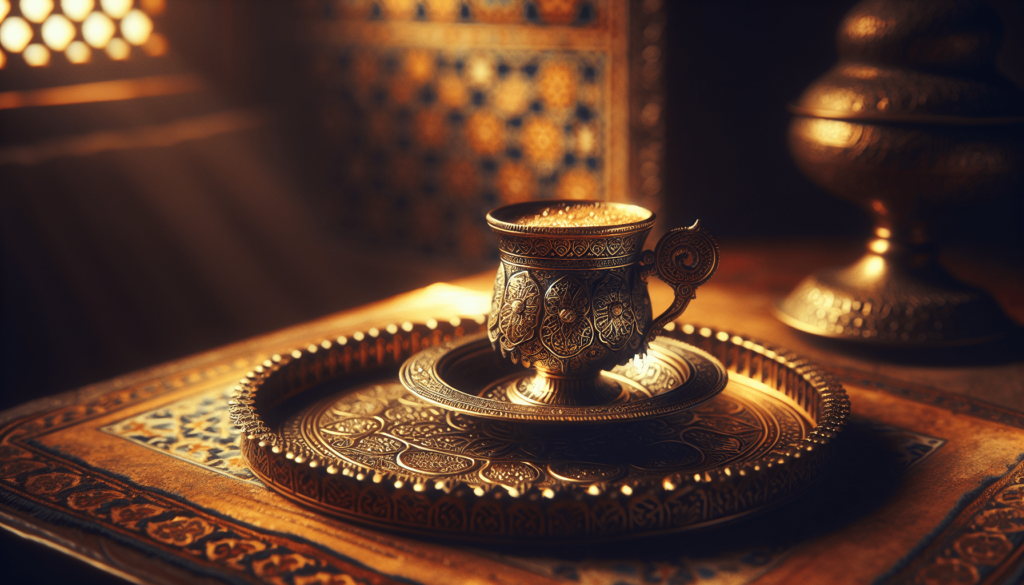Have you ever wondered about the captivating history of the Ottoman Empire? Well, get ready to embark on a journey back in time as you delve into the rich and fascinating tales of one of the most powerful and influential empires in history. From its humble beginnings in the 13th century to its eventual downfall in the early 20th century, the Ottoman Empire’s story is full of intrigue, conquests, and cultural advancements. Join us as we explore the rise and fall of this empire, uncovering the secrets that shaped an era and left a lasting legacy on the world. The Ottoman Empire, one of the most powerful and influential empires in history, rose to prominence in the 13th century and lasted until the early 20th century. With its origins rooted in a small Anatolian principality, the empire expanded through military conquests and strategic alliances to become a vast and diverse empire that spanned three continents. In this article, we will explore the rise of the Ottoman Empire, delving into its origins, the conquests of Mehmed the Conqueror, the expansion and consolidation of Ottoman power, and much more.
The Origins of the Ottoman Dynasty
The Ottoman Empire traces its roots back to the small Anatolian principality founded by Osman I in the late 13th century. Osman I and his successors, known as Beyliks, gradually expanded their territory through military campaigns and alliances, laying the foundation for what would become the Ottoman Empire.
Under the leadership of Osman I’s son, Orhan I, the Ottoman Empire entered a period of rapid expansion. Orhan I captured important Byzantine territories, including Bursa and Nicomedia, establishing a strong foothold in Anatolia. This marked the beginning of the Ottoman Empire’s ascent to power.
Mehmed the Conqueror and the Fall of Constantinople
One of the most significant events in Ottoman history was the conquest of Constantinople by Mehmed the Conqueror in 1453. Mehmed II meticulously planned and executed the siege, utilizing advanced military tactics and weaponry, including the use of massive cannons. The city, which had been the capital of the Byzantine Empire for over a thousand years, fell to the Ottomans after a fierce battle.
The fall of Constantinople marked a turning point in history and solidified the Ottoman Empire’s position as a major power in the region. Mehmed the Conqueror renamed the city Istanbul and made it the new capital of the Ottoman Empire. This conquest not only secured the empire’s control over the strategic Bosporus Strait but also served as a symbolic victory, as Constantinople was seen as the heart of the Christian world.
Expansion and Consolidation of Ottoman Power
Following the conquest of Constantinople, the Ottoman Empire continued to expand its territories through military campaigns and strategic alliances. The empire stretched from the edges of Europe to the Middle East and North Africa, encompassing a vast and diverse range of cultures, religions, and ethnicities.
Under the reign of Sultan Suleiman the Magnificent, the Ottoman Empire experienced its golden age. Suleiman’s military campaigns brought significant territorial gains, including the capture of Belgrade, Rhodes, and the Ottoman advance into Hungary. This expansion further solidified Ottoman power and influence.
To ensure effective governance over their vast territories, the Ottomans developed a complex administrative system. The empire was divided into provinces, each governed by a governor known as a pasha. Local officials and administrators played a crucial role in maintaining law and order and collecting taxes. This system allowed the Ottomans to control their diverse territories while maintaining a centralized authority.
Society and Culture in the Ottoman Empire
The Millet System and Religious Tolerance
One of the notable aspects of the Ottoman Empire was its policy of religious tolerance, exemplified by the Millet System. Under this system, different religious communities, known as millets, were granted a degree of autonomy and allowed to govern their internal affairs. The millets included Muslims, Christians, and Jews, each with its own set of laws and regulations.
This system fostered a sense of communal identity and allowed religious minorities to practice their faith freely. Christians and Jews, for example, were allowed to maintain their own religious institutions, schools, and courts. This policy of religious tolerance attracted people from across the empire, contributing to the diverse and multicultural nature of Ottoman society.
The Role of Women in Ottoman Society
While Ottoman society was predominantly patriarchal, women played significant roles in various aspects of society. In the early period of the empire, women in the imperial family held considerable power and influence. The mothers, wives, and daughters of sultans were often involved in politics and had a say in important matters.
Outside the imperial family, women had diverse roles depending on their social status and location. In urban areas, women were engaged in trade, crafts, and education. Some even became renowned poets and scholars. In rural areas, women were primarily responsible for managing households and agricultural activities. Despite societal limitations, women in the Ottoman Empire had opportunities for social and economic participation.
Art, Architecture, and Literature
The Ottoman Empire left an indelible mark on the world of art, architecture, and literature. Ottoman art and architecture were heavily influenced by various cultures and reflected the empire’s multicultural nature. The grand mosques, such as the Hagia Sophia and the Suleymaniye Mosque, showcased the empire’s architectural brilliance.
The art of calligraphy flourished in the Ottoman Empire, with skilled calligraphers producing intricate and ornate works. Illuminated manuscripts and miniature paintings also gained prominence, depicting scenes from everyday life, historical events, and religious subjects.
Ottoman literature witnessed a golden age during the reign of Sultan Suleiman the Magnificent. Poets and scholars produced beautiful works in Turkish and Arabic, including epic poems, love ballads, and mystical writings. Prominent literary figures, such as Fuzuli and Sadi, left a lasting legacy through their contributions to Ottoman literature.

Economy and Commerce in the Ottoman Empire
The Silk Road and Ottoman Trade
The Ottoman Empire was strategically positioned on the ancient trading routes, including the Silk Road. This advantageous location facilitated trade between Europe, Asia, and Africa, allowing the empire to become a thriving economic powerhouse.
Merchants and traders from various countries flocked to Ottoman markets, bringing with them exotic goods and commodities. The Ottomans established a vast network of trade routes, connecting major cities and markets across their vast territories.
One of the most valuable commodities traded in the Ottoman Empire was silk. The empire established close ties with the Safavid Empire in Persia, which was known for its silk production. Ottoman merchants played a crucial role in the silk trade, importing and exporting silk to markets in Europe and Asia.
The Rise of Ottoman Manufacturing
In addition to trade, the Ottoman Empire also developed a vibrant manufacturing industry. Skilled craftsmen produced goods ranging from textiles and ceramics to metalwork and weaponry. Istanbul, in particular, became a center of craftsmanship and artisanal production.
The empire’s manufacturing sector thrived due to the availability of raw materials and a skilled workforce. Market demand, both domestic and international, fueled the expansion of manufacturing industries across the empire.
Ottoman Banking and Financial Systems
The Ottoman Empire had a sophisticated banking and financial system, which played a crucial role in facilitating trade and commerce. The empire had a network of moneylenders, bankers, and exchange offices that provided financial services to merchants and individuals.


